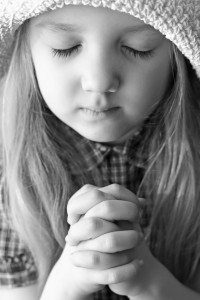We can always pray
 A devastating typhoon in the Philippines has left tens of thousands dead, injured or homeless.
A devastating typhoon in the Philippines has left tens of thousands dead, injured or homeless.
Current U.N. and Philippine government estimates indicate over 9 million people are affected by Super Typhoon Haiyan [Yolanda] across the country.
620,000 have been displaced from their homes and communities. Many thousands are without food, water, shelter or electricity and have been for days.
The feelings of grief and helplessness on the part of those of us who read about this tragedy are palpable. The world is mobilizing to send humanitarian aid; the U.S. Navy is sending aircraft carriers equipped for disaster relief.
What can we do?
Actually, we can pray. And we can donate money to reputable relief organizations.
We can always pray
Research on the power of prayer in healing has nearly doubled in the past ten years. Even the National Institutes of Health in the U.S., which refused to even review a study with the word prayer in it four years ago, is now funding a prayer study through its Frontier Medicine Initiative.
However, prayer results are hard to research and have returned mixed results. Probably because there are so many factors to consider and they can’t all be covered in a single study.
At least 10 studies on the effects of prayer have been conducted in the last six years, with varying results. Some sources say it’s questionable whether prayer is even an appropriate subject for research.
Harvard scientist Herbert Benson, M.D. has been conducting studies on prayer for over 30 years. He specifically focuses on meditation, the Buddhist form of prayer, to understand how mind affects the body.
He finds that all forms of prayer evoke a relaxation response that lessens stress, quiets the body and promotes healing. All that would be helpful to those in the Philippines.
Those of us committed to prayer know it works.
Pray for:
- Gentle weather.
- Help to arrive quickly bringing medical supplies, food and shelter.
- Families to be re-united.
- Emergency workers to have all the resources they need.
- Comfort for all those affected.
Or we can pray in the Native American tradition for “health and help” and let the Creator determine what that means for those in the Philippines.
“In the life of the Indian, there was only one inevitable duty, the duty of prayer, the daily recognition of the Unseen and Eternal. His daily devotions were more necessary to him than daily food.” Charles A Eastman [Ohiyesa], Santee Sioux
Send money, not stuff
If you wish to donate, send money to the professional charities that have the expertise to use it wisely to bring the most help.
In the words of one relief worker in an article in Slate.com:
“Send money. Not shoes, teddy bears or breast milk.
“After the tsunami, similarly well-intentioned people cleaned out their closets, sending boxes of ‘any old shoes’ and other clothing to the countries.
“I was there after the tsunami and saw what happened to these clothes: Heaps of them were left lying on the side of the road.
“Cattle began picking at them and getting sick.
“Civil servants had to divert their limited time to eliminating the unwanted clothes.
“Sri Lankans and Indonesians found it degrading to be shipped people’s hand-me-downs.
“The aid community has coined a term for these items that get shipped from people’s closets and medicine cabinets as SWEDOW—Stuff We Don’t Want.”
Put another way:
- They clog the roads and take up hours of labor to move when that labor can be better spent distributing food and medical supplies.
- Planes bringing in teddy bears are competing for landing strip space with planes bringing in medical supplies and food.
- When old shoes and clothes are sent from the U.S., they just waste people’s time and slow down getting lifesaving medicines and food to affected people.
- Give money to organizations that have worked in the affected areas before the storm—they will be more likely to be able to navigate the local area and be able to respond faster, as it won’t take them time to set up.
- Give money to agencies that are able to articulate what the actual needs are and transparently tell you how they are responding.
- Give money to agencies that can procure items locally to help rebuild the economy.
- Give money to agencies that are working with the government to ensure that their response is aligned with the national response.
If you find an organization you are thinking of giving money to, check their credentials at the Charity Navigator, which evaluates the financial health and efficiency of more than 5,500 organizations
The fastest way to get money where it’s needed: You can donate to the Philippine Red Cross by selecting the Super typhoon Yolanda campaign on their donation page. One American dollar equals about 42 Philippine Pesos.
Please let the experts do their jobs. Our job as fellow humans is to give them the means to do it by sending money. And praying. It all works.
Sources for this article: http://www.slate.com/articles/news_and_politics/foreigners/2013/11/how_to_help_typhoon_haiyan_survivors_in_the_philippines_the_only_donation.html
http://www.nytimes.com/2006/03/31/health/31pray.html?pagewanted=all
Molly Larkin is the co-author of the international best-seller “The Wind Is My Mother; The Life and Teachings of a Native American Shaman” and other books on health. She is passionate about helping people live life to their fullest potential through her classes, healing practice and blog at www.MollyLarkin.com

